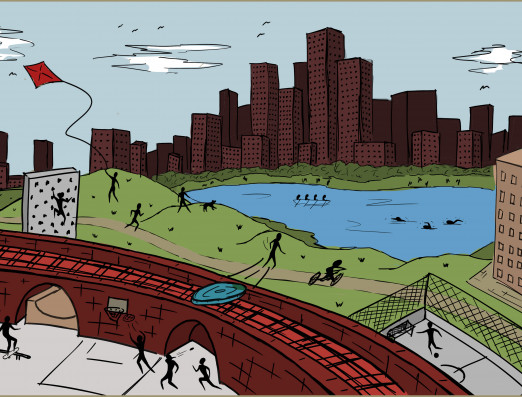In this interview, Roz Barr reflects on the history of tin tabernacles, the Store Street chapel and the importance of model making.
The Tin Chapel came to Store Street in December 2018, from the recently completed restoration and refurbishment of St Augustine’s church in Hammersmith, which has won both an RIBA National Award and is shortlisted in this year’s AJ Building of the Year. The pavilion was erected outside the Church by Roz Barr Architects as a fond reminder of temporary tabernacles that were once common in church communities throughout Britain. Assembled from sheets of corrugated tin, they were dismantled once their permanent counterparts were completed. Having served their purpose, these lightweight structures were then flat packed for shipment and repurposed elsewhere.
The installation demonstrated the architect’s process in making, in the context of the church refurbishment. Positive formwork used in the making of the new cast iron tabernacle and cast-iron ring above the altar were repurposed as decorative elements within the installation. The galvanised steel shroud to the external wall is in reference to the original ‘Tin Cathedral’, while the timber frame alludes to the large roof trusses in the church interior, which have been stripped back and lightened through their refurbishment.
Roz Barr's Tin Chapel was resurrected outside the Building Centre with a communal bench made from folded OSB board, stained to match the red lining of the chapel. Acting as a temporary ‘Pew’, the bench was a place for the public to congregate, gather and reflect during the festive season.
Supported by The Built Environment Trust. Video by Chris Jackson.


.jpg)